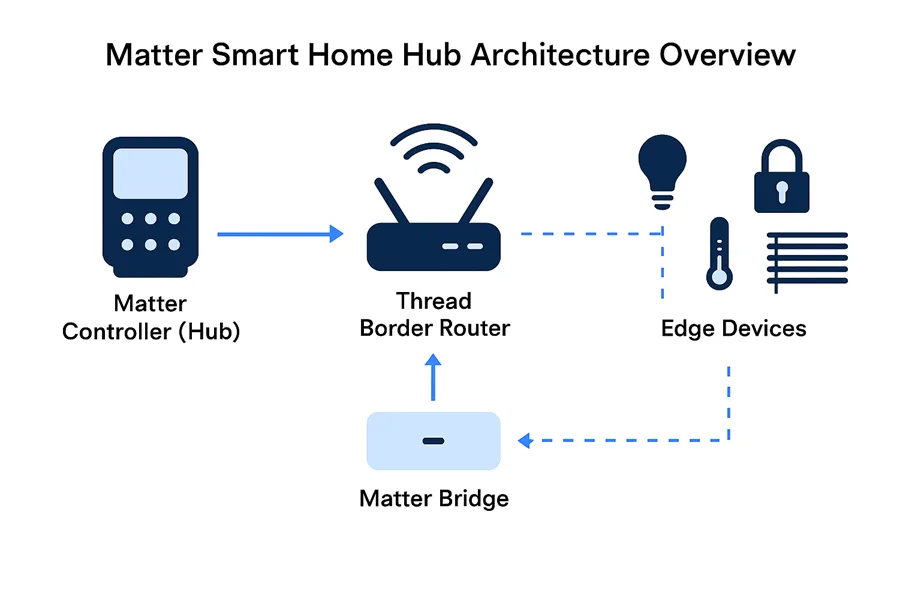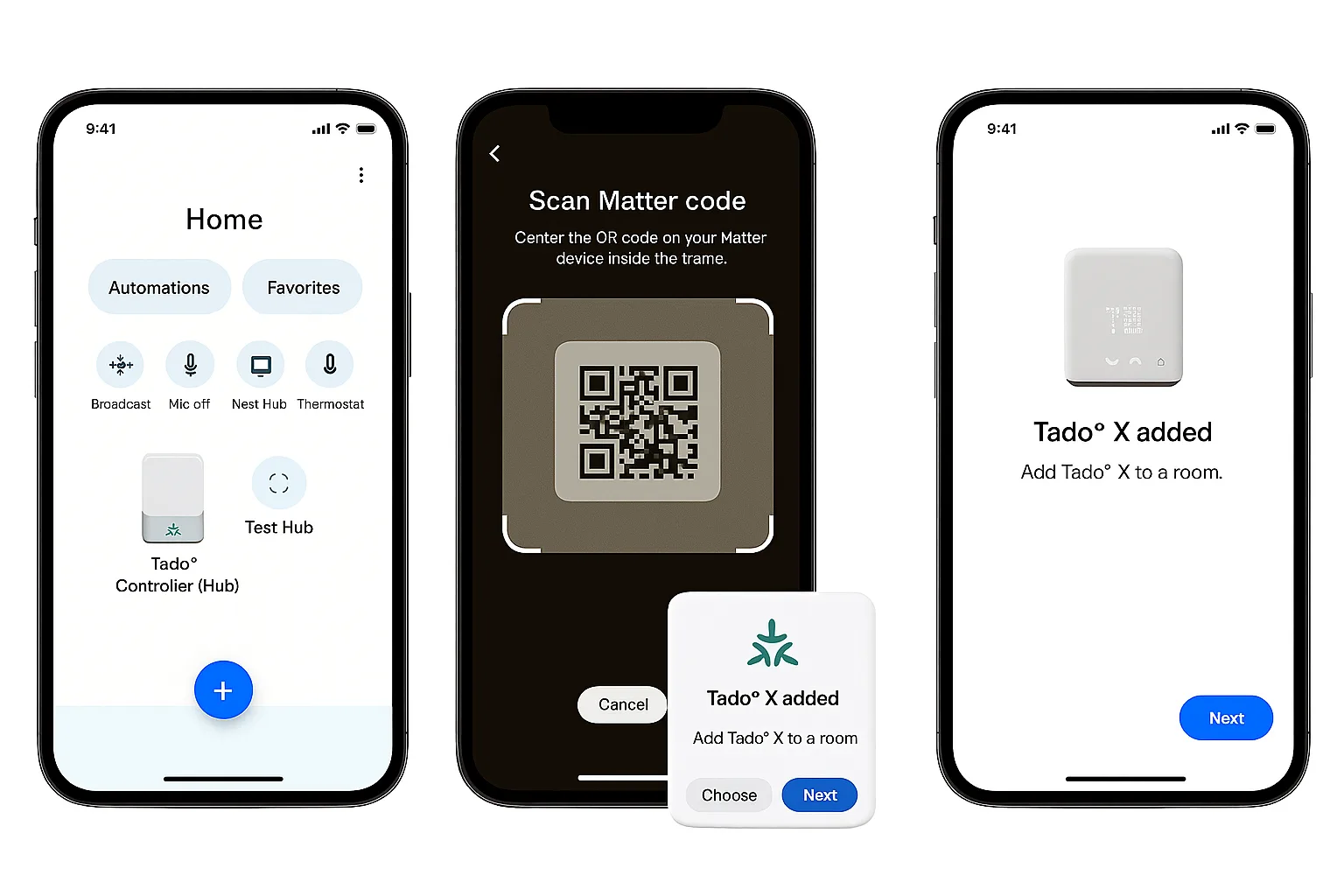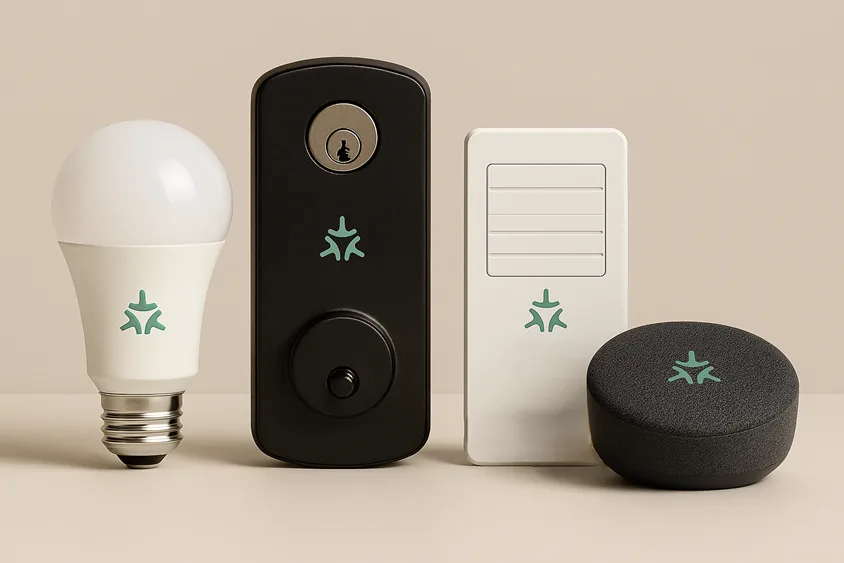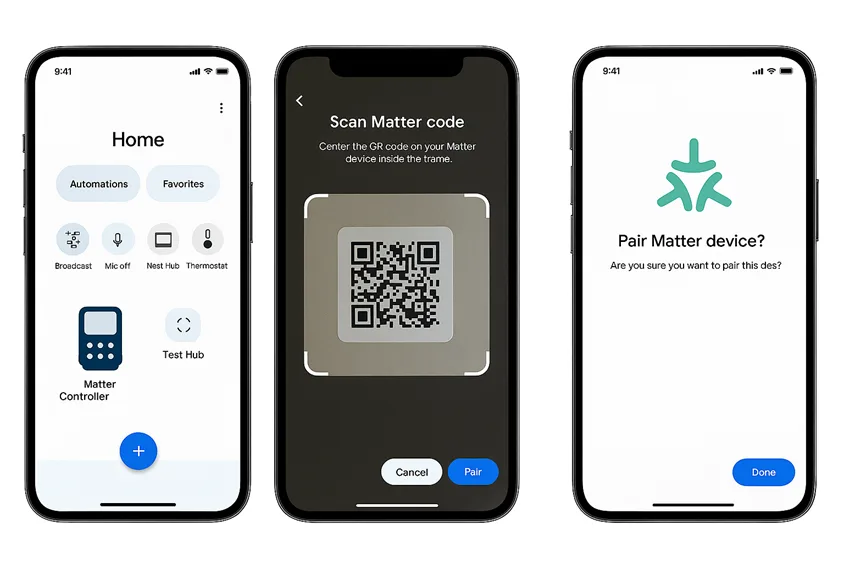If you’ve ever struggled to make your smart devices from different brands work seamlessly together, or wondered which protocol to bet your new home automation investment on, this guide is written for you.
The smart home industry is experiencing a remarkable shift. Matter—developed by a powerhouse coalition including Google, Apple, Amazon, and Samsung—promises to be the universal language for smart home devices. With interoperability, enhanced security, and open-source standards at its core, Matter smart home hub architecture is rapidly becoming the gold standard for modern, future-ready living.

- What Is Matter Smart Home Architecture?
- Matter Hub Architecture: Fundamentals & Components
- How Matter Protocol Differs from Other Smart Home Standards
- Setting Up A Matter Smart Home: A Step-by-Step Guide
- Matter in Action: Examples, Case Studies, and Current Industry Adoption
- FAQs
- Conclusion: Future-Proof Your Home With Matter Smart Home Hub Architecture
What Is Matter Smart Home Architecture?
Matter is an open, IP-based protocol for smart home devices. Think of it as a “universal translator” ensuring your smart bulbs, locks, thermostats, and sensors “speak” the same language—regardless of brand. The Matter smart home architecture is designed to break down the barriers created by walled gardens and proprietary ecosystems.
- Interoperability: Devices from different manufacturers seamlessly work together.
- Security: Matter mandates strong encryption and authentication for data privacy and protection.
- Simplicity: The setup process is designed to be intuitive—even for non-technical users.
- Local Control: Devices work locally without requiring cloud access, ensuring reliability even during internet outages.
Imagine walking into your home and every device—from your IKEA blinds to your Google Nest thermostat—works harmoniously, controlled via any compatible app or voice platform. That’s the power of Matter smart home hub architecture.
Matter Hub Architecture: Fundamentals & Components
At the heart of Matter smart home hub architecture is a Matter Controller. Let’s break down what this means in daily life and how it enables your devices to communicate effortlessly.
Key Components of Matter Hub Architecture
| Component | Role in Matter Hub Architecture | Key Examples |
|---|---|---|
| Matter Controller (Hub) | Onboards, manages, and automates all Matter devices | Google Nest Hub, Apple HomePod, Amazon Echo, Samsung SmartThings Hub |
| Thread Border Router | Bridges Thread mesh network and main Wi-Fi network | Apple HomePod Mini, Google Nest Hub, Samsung SmartThings |
| Matter Bridge | Integrates non-Matter devices into Matter fabric | Philips Hue Bridge, Aqara M3, Home Assistant |
| Edge Devices | The appliances or sensors themselves | Smart bulbs, locks, thermostats, motion sensors, blinds, etc. |
The Matter hub is responsible for device management, automation, and local control, and acts as the “brain” of your smart home. It enables quick commissioning, fast response times, and local automations that truly “just work”.
How Matter Hub Architecture Works:
- Onboarding: Devices are added via a secure QR code or NFC scan, using Bluetooth Low Energy for discovery.
- Local Network Management: The hub maintains a secure, encrypted network—known as a “Matter fabric”—across Wi-Fi, Ethernet, and Thread mesh.
- Automation & Control: Users can automate routines and control devices using any Matter-compatible app or platform (Google Home, Alexa, Apple Home, etc.).
- Bridging: Existing Zigbee or Z-Wave devices are integrated via bridges, securing your legacy investments.
Why this matters: Now you can choose devices based on function and preference, not on whether they’re compatible with your current ecosystem.
How Matter Protocol Differs from Other Smart Home Standards
Matter isn’t the first attempt at smart home harmony. Let’s see how it stacks up against legacy protocols like Zigbee, Z-Wave, and proprietary ecosystems like Wi-Fi only.
| Feature | Matter | Zigbee | Z-Wave | Wi-Fi |
|---|---|---|---|---|
| Interoperability | Universal (cross-brand) | Brand-limited | Brand-limited | Brand/protocol-limited |
| Security | Mandatory encryption & authentication | Good, but varies | Good, but varies | Often strong, but not universal |
| Networking | IP-based (Thread, Wi-Fi, Ethernet) | Mesh, 2.4 GHz | Mesh, sub-GHz | Star, 2.4/5 GHz |
| Local Control | Yes (default) | Sometimes | Sometimes | Sometimes |
| Open Source | Yes | Partly | Partly | No |
| Device Categories | Rapidly expanding | Mature, but slow growth | Mature, slow-growing | Broad, but fragmented |
| Setup Simplicity | Fast QR-code/NFC | Sometimes complex | Sometimes complex | App or WPS setup |
| Energy Efficiency | High (Thread) | High | High | Lower (for always-on) |
| Support & Industry Adoption | Backed by Apple, Google, Amazon, Samsung, and hundreds of brands | Many brands, fragmented | Smaller, but robust | Universal, but not “smart home-first” |
Matter’s universal interoperability is its real innovation, letting you mix and match brands and future-proof your home. Unlike proprietary approaches (Zigbee, Z-Wave), you’re not locked in. Matter’s open-source foundation and commitment from tech’s “big four” means faster updates, broader device support, and better user experience.
Setting Up A Matter Smart Home: A Step-by-Step Guide
Are you ready to experience the future? Here’s how to get started with Matter smart home architecture in your real-world home.
1. Choose Your Matter-Compatible Platform/Hubs
Decide on your primary ecosystem: Amazon Alexa, Apple Home, Google Home, Samsung SmartThings, or go open-source with solutions like Home Assistant.
Pro tip: You can use multiple platforms side by side thanks to Matter’s multi-admin support!
2. Make Sure You Have a Matter Controller (Hub)
This could be an Amazon Echo (latest gen), Apple HomePod/Apple TV, Google Nest Hub, or Samsung SmartThings station. If you need Thread support for low-power mesh devices, make sure your hub has Thread Border Router capability.
3. Add Matter Devices
- Ensure your devices are Matter-certified (look for the Matter logo).
- Follow the onboarding instructions. Usually, you scan a QR code on the device using your preferred app. Bluetooth Low Energy is used for initial discovery, then the device joins via Thread or Wi-Fi.
- For Zigbee/Z-Wave sensors, add a compatible bridge (e.g., Philips Hue Bridge, Aqara M3, etc.).
4. Set Up Automations and Multi-Admin
- Use your favourite app to automate routines—like turning lights on at sunset, adjusting thermostats based on weather, or locking doors.
- Share device access with other family members or connect devices to multiple platforms (e.g., add your light to both Apple Home and Google Home) for flexibility.
5. Control Everything Locally
Enjoy near-instant response times, reliable automations, and peace of mind—your devices keep working even when internet access goes down.
Example step-by-step setup: Adding a Matter-enabled Tado X Smart Thermostat via Google Home:
- Open the Google Home app.
- Press “Add Device”, scan the Matter QR code on your Tado.
- The app discovers and adds it; set your room preferences.
- Done—control temperature from Google Home, or share it with Apple Home too for family flexibility.

Matter in Action: Examples, Case Studies, and Current Industry Adoption
Real-World Device Examples (2025):
- Lighting: Govee Smart Lights, Nanoleaf Essentials—support Matter over Thread/Wi-Fi.
- Blinds/Shades: SmartWings Blinds integrate with Apple, Google, and Alexa.
- Security: Nuki Ultra Smart Lock, Aqara Smart Plugs, and sensors.
- Thermostats: Tado X, Ecobee with upcoming Matter firmware updates.
- Cleaning: Roborock’s latest vacuum models with Matter announced.
- Bridges: Philips Hue Bridge, Aqara M3, Eve Bridge for Thread legacy device integration.

Case Study: Seamless Multi-Ecosystem Control
A family installs Matter-enabled SmartWings blinds, a Govee light strip, and a Nuki lock. The blinds open automatically at sunrise using Google Home routines, and the lights turn on in the evening with Apple Home automation to create a relaxing mood. Their Nuki lock can be controlled using both Alexa and the iOS app. The result is no more switching between apps, being stuck in one ecosystem, or worrying about compatibility issues. Even during a broadband outage, local automations continue functioning.
Key Industry Trends (2025):
- Growing Adoption: Over 750 Matter-certified devices available globally, adoption up year-over-year.
- Expanded Device Types: Matter 1.4 now supports more appliances (e.g., solar panels, water heaters, energy management).
- Focus on Energy Savings: Native Matter energy management clusters let users automate heating/cooling for cost savings and sustainability.
- Security Emphasis: All Matter traffic is encrypted end-to-end, with regular OTA security updates and vendor transparency.
- Bridging Legacy Devices: Popular Zigbee, Z-Wave, and older Wi-Fi gadgets can now be added to the Matter network via certified bridges.
- Multi-Admin Realized: Devices are now often “multi-admin”—run with both Google and Apple simultaneously, for example.
Why Invest in Matter? (And Why Buy From a Certified Partner?)
- Future Proof: Matter is rapidly becoming the global standard, with over 750 devices and all major brands on board.
- Freedom: No more lock-in. Choose the best device for each job.
- Reliability Up: Local control = less dependence on flaky cloud servers.
- Security: Always-encrypted traffic, secure device onboarding, and regular OTA updates.
- Resale Value: Homes with consistent, universal smart home installations are more attractive to buyers.
- Energy and Cost Savings: Next-gen energy management lets you automate usage, tap into solar/wind, and monitor real-time stats.
Note: If you’re buying or upgrading a big automation system in 2025, check for the Matter-certified mark and choose products from trusted companies that will provide updates and support for the future. Go to the official directory of the Connectivity Standards Alliance to see the most up-to-date list of devices.
FAQs
Conclusion: Future-Proof Your Home With Matter Smart Home Hub Architecture
Matter smart home architecture is transforming everyday living. With robust Matter hub architecture, clear security protocols, and universal compatibility, you can finally build a connected home where convenience, control, and freedom are standard—not a pipe dream. Backed by every major tech brand and growing by the month, Matter is the future-proof foundation for smart homes in 2025 and beyond.
Now is the time to upgrade. Choose the Matter smart home hub design for maximum flexibility, security, and being ready for the future. Check for the Matter symbol, only work with approved partners, and feel confident—your smart home, your choice.


